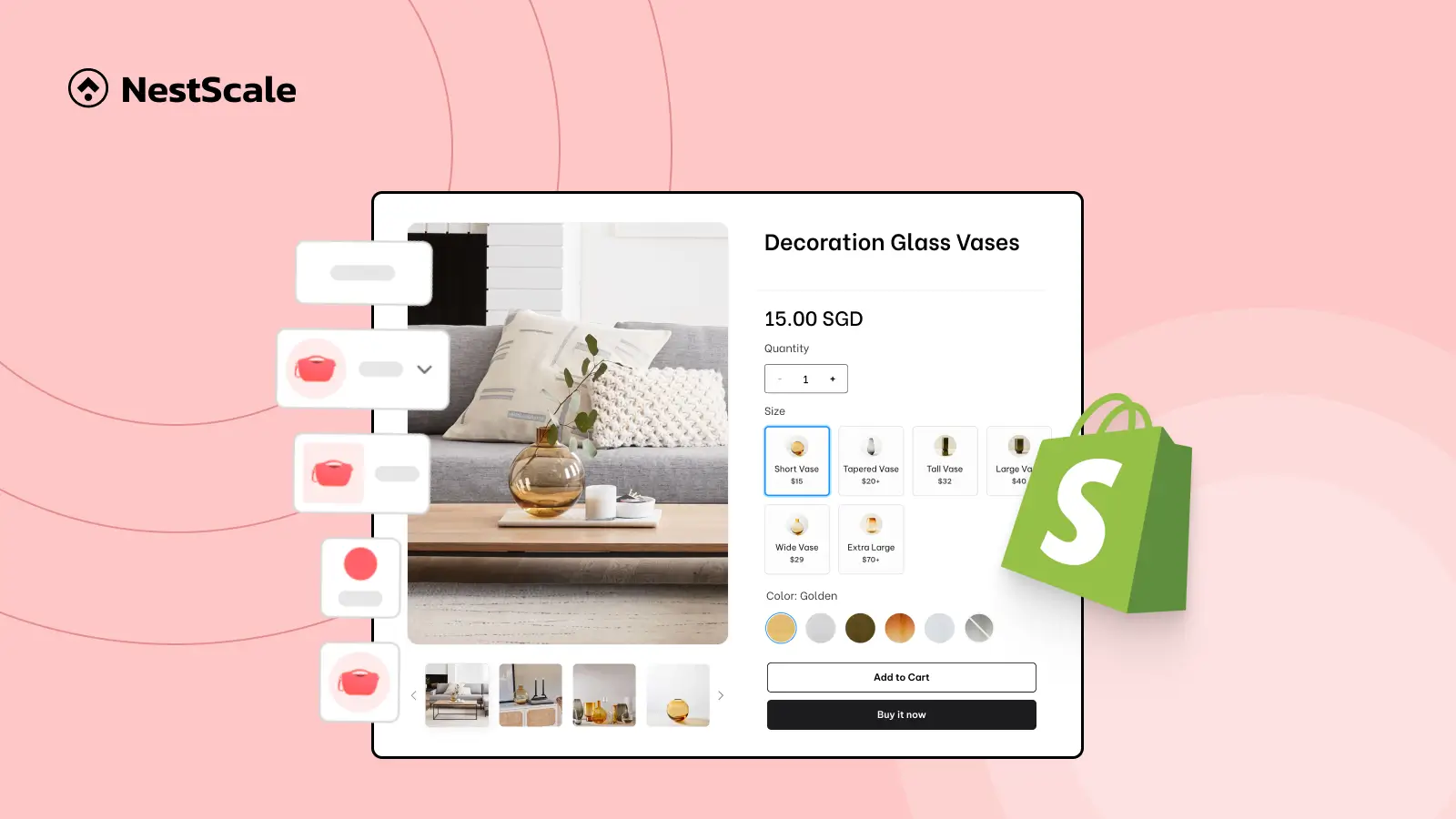Hey there, fellow E-Commerce Aficionados!
If you’ve ever wondered how successful online stores work their magic, you’re in the right place. In this blog, we’re delving deep into the captivating realm of E-Commerce Attribution. Whether you’re a seasoned e-commerce pro or just dipping your toes into the online retail waters, this read promises to unlock the mysteries behind E-Commerce Attribution Models and their role in your Shopify success story.
So, kick back, relax, and let’s embark on this enlightening journey together!
What is the E-Commerce Attribution Model?
The E-commerce Attribution Model is a method for online store owners to track and understand how different marketing efforts contribute to customer purchases. You look at all the steps they took, like clicking on an ad, reading an email, or browsing your social media page, and give credit to each of these steps.
The E-Commerce Attribution Model will help you see which of your marketing strategies are doing the heavy lifting in getting customers to make a purchase. With this knowledge, you can fine-tune your budget and efforts, focusing on the channels and tactics that generate the most sales.
Why does the E-Commerce attribution model matter?
Let’s consider a real-life example to see why this Attribution Model matters: Imagine you’re running an online fashion store and spending money on various marketing channels: social media ads, Google Ads, and email campaigns. Here’s how E-Commerce Attribution Models can make a real difference
Smart Budget Allocation
You’re investing $1,000 in each of these channels every month. By using attribution models, you discover that your social media ads are bringing in the most sales with a 20% return on investment (ROI), while email campaigns have only a 5% ROI. This insight tells you to shift more budget to social media, maximizing your ROI.
Customer Insights
Attribution reveals that most customers who buy from your store were initially drawn in by your social media posts featuring user-generated content (UGC). This shows that your audience values authenticity and real-life examples, so you decide to create more UGC-focused content to keep them engaged.
Conversion Rate Enhancement
Your attribution data indicates that customers who click on product videos on your website are 50% more likely to make a purchase compared to those who only see images. Armed with this information, you prioritize creating more product videos, resulting in a significant boost in conversions.
Loyalty Insights
Through attribution, you discover that customers who sign up for your newsletter and engage with your loyalty program tend to return and make more purchases. This encourages you to invest further in nurturing loyalty programs and providing exclusive offers to keep customers coming back.
User Experience Refinement
Attribution data highlights that a confusing checkout process is causing cart abandonment. You revamp the checkout process, making it smoother and more user-friendly, resulting in a reduction in cart abandonment rates and higher customer satisfaction.
So, we can admit that the E-Commerce Attribution model is a practical tool that translates into higher profits and a stronger brand presence in the competitive online fashion industry.
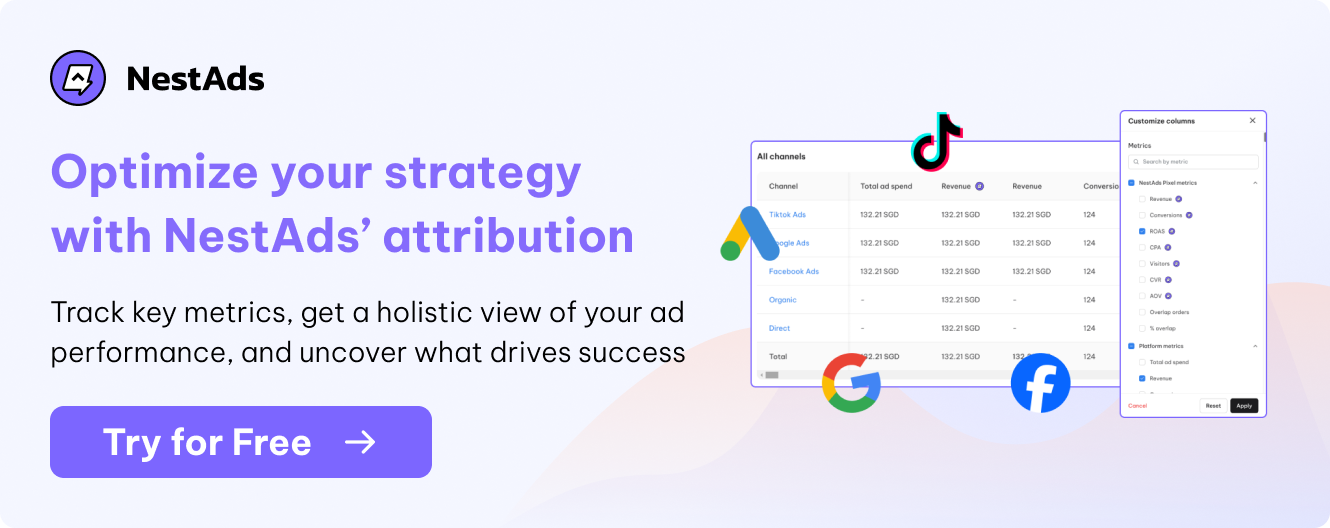
Types of E-Commerce Attribution Models
We will begin by demystifying the different attribution models that can be your ticket to E-Commerce success:
First Touch Attribution
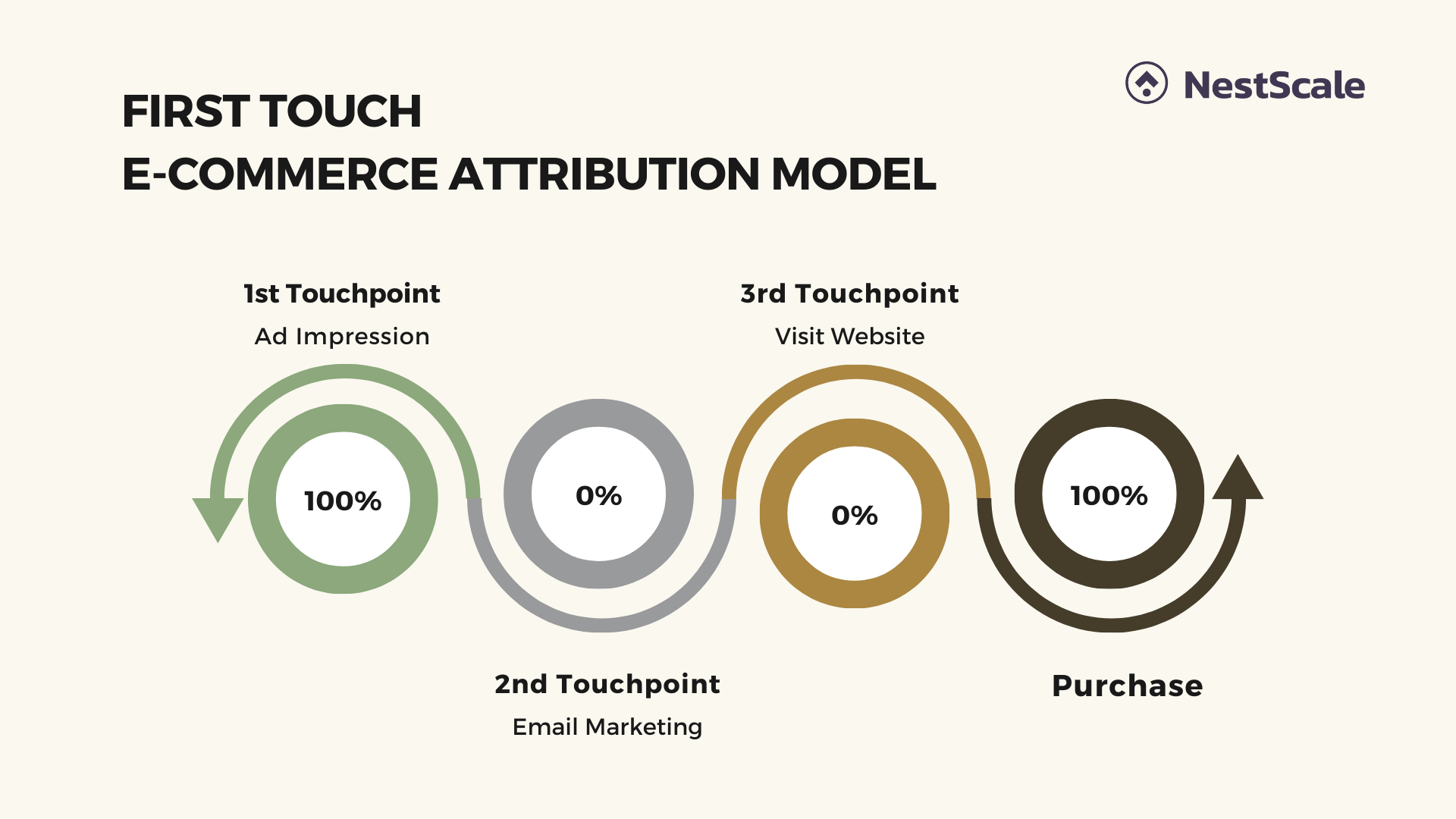
The first touch attribution model focuses on the initial interaction a customer has with your E-Commerce store. It attributes all the credit for a conversion to this first touchpoint.
While the first touch attribution model offers valuable insights, it’s important to remember that not all conversions can be attributed solely to this initial contact. The customer journey is often more complex, involving multiple touchpoints.
Last Touch Attribution
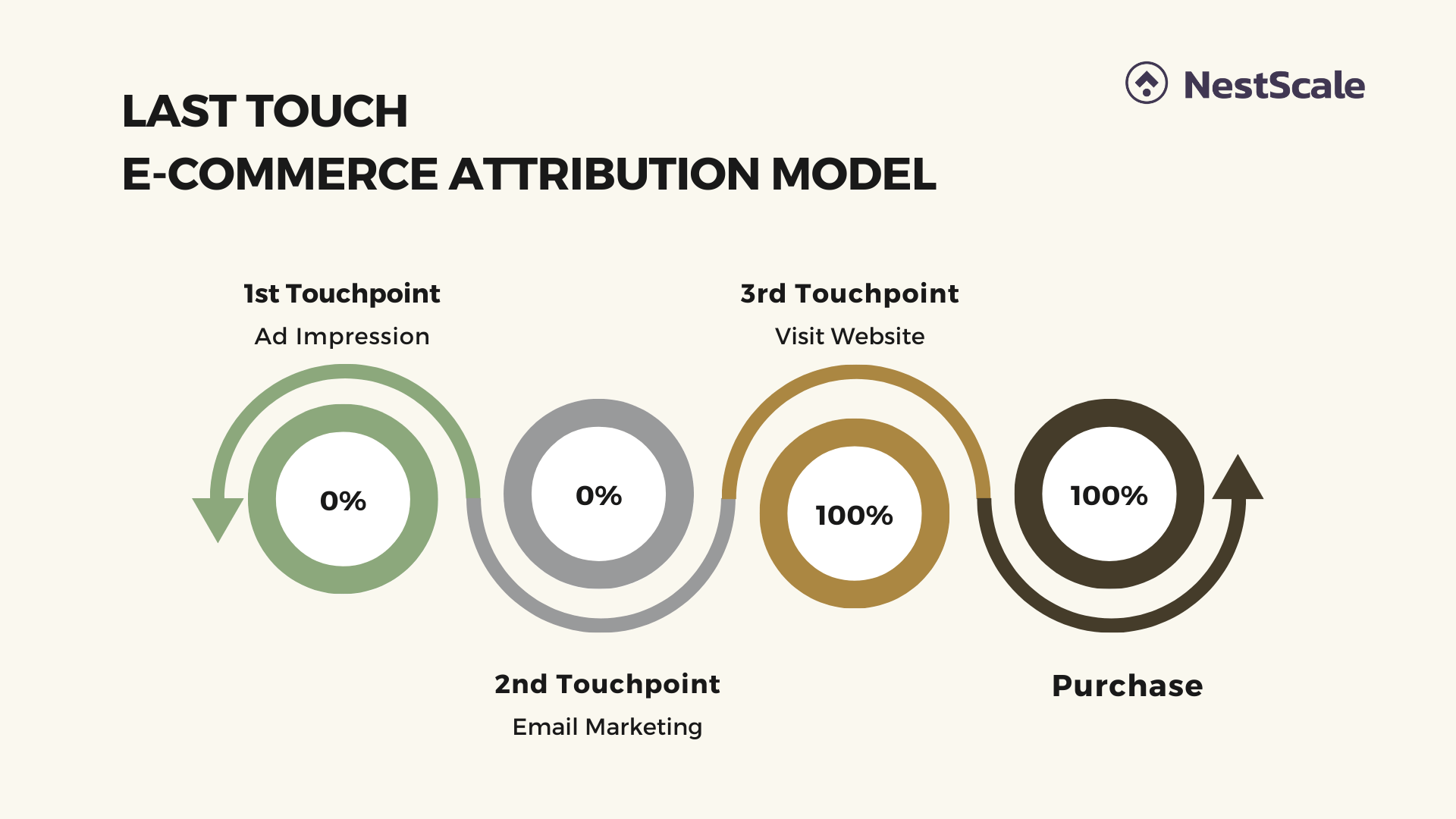
The last touch attribution model, on the other hand, gives all the credit to the final interaction before a conversion. It assumes that the last touchpoint is the most influential in the customer’s decision-making process.
However, this model tends to oversimplify the customer journey. It doesn’t consider the contribution of earlier touchpoints that played a role in attracting and nurturing the customer.
Linear Attribution
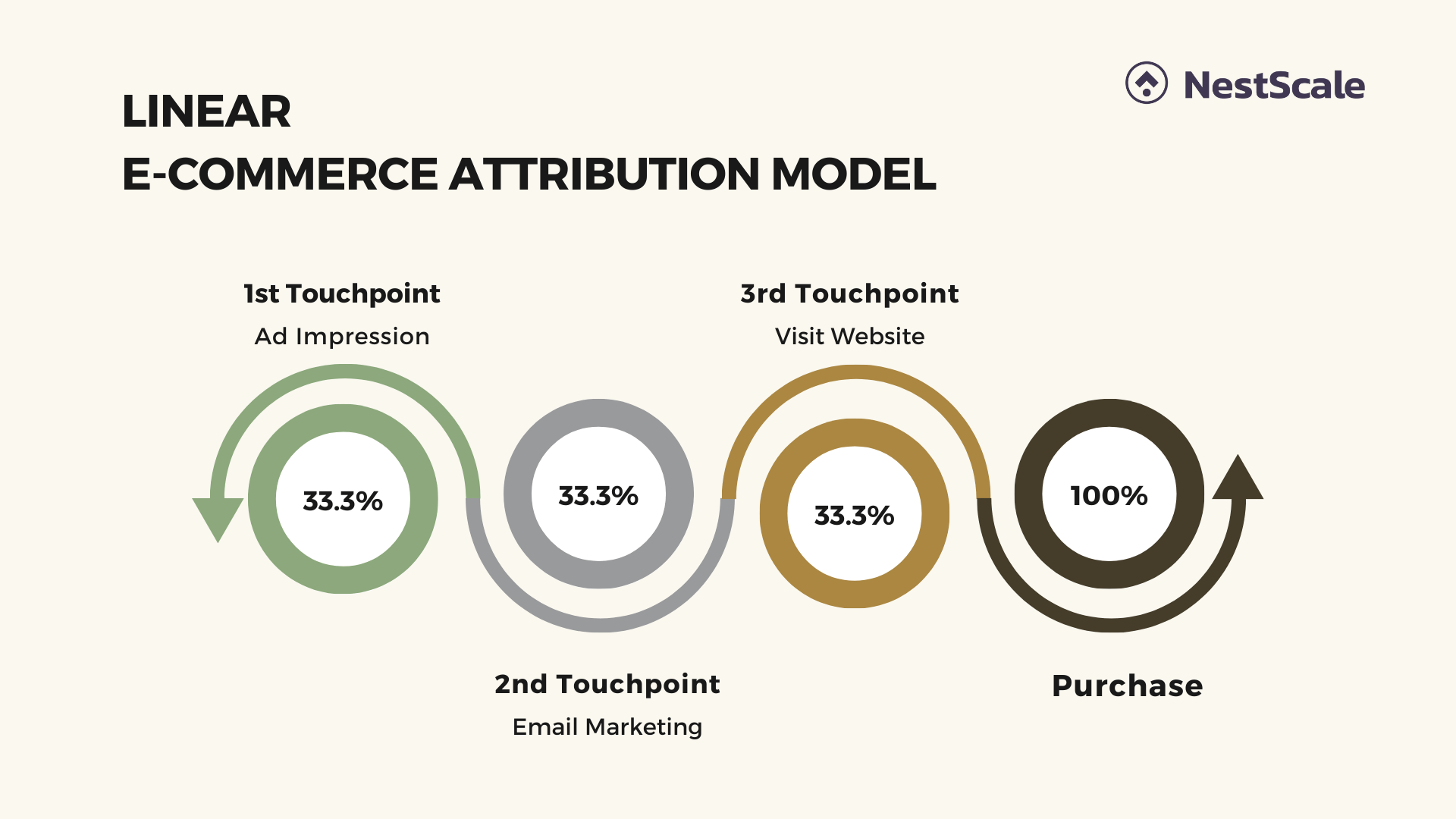
Linear attribution takes a more democratic approach, giving equal credit to all touchpoints along the customer journey. This model is particularly useful when your E-Commerce strategy involves a mix of marketing channels, each contributing to customer engagement. By assigning equal weight to all touchpoints, you gain a comprehensive view of the customer journey.
Positional-Based Attribution
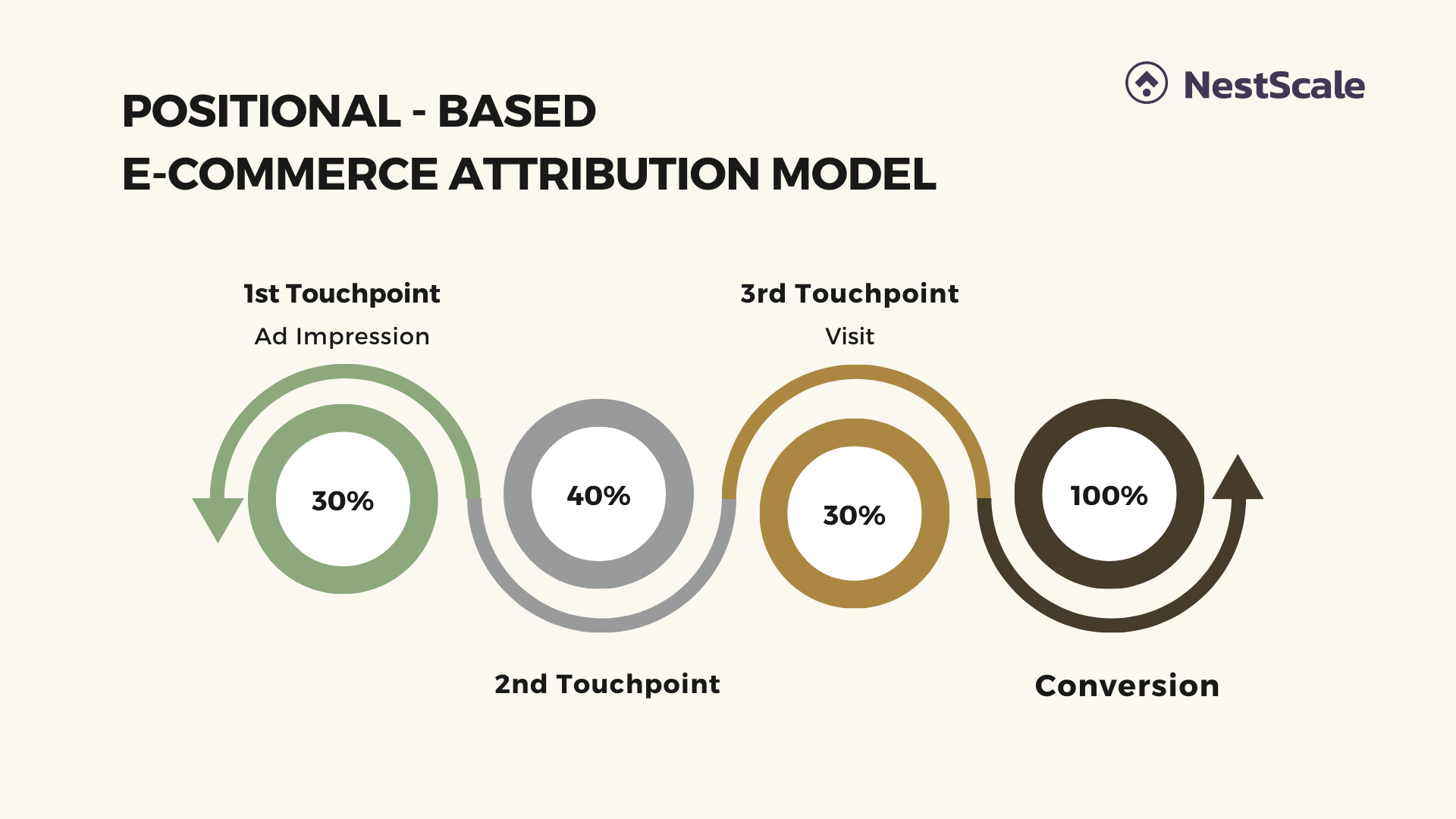
Positional-based attribution, often referred to as the U-shaped model, gives partial credit to both the initial and final interactions, with the rest distributed among intermediate touchpoints.
The U-shaped model is ideal for businesses where the first and last touchpoints play pivotal roles. For instance, if your customers often discover your products through social media and make their final purchase after receiving a promotional email, this model helps allocate credit accurately.
Time Decay Attribution
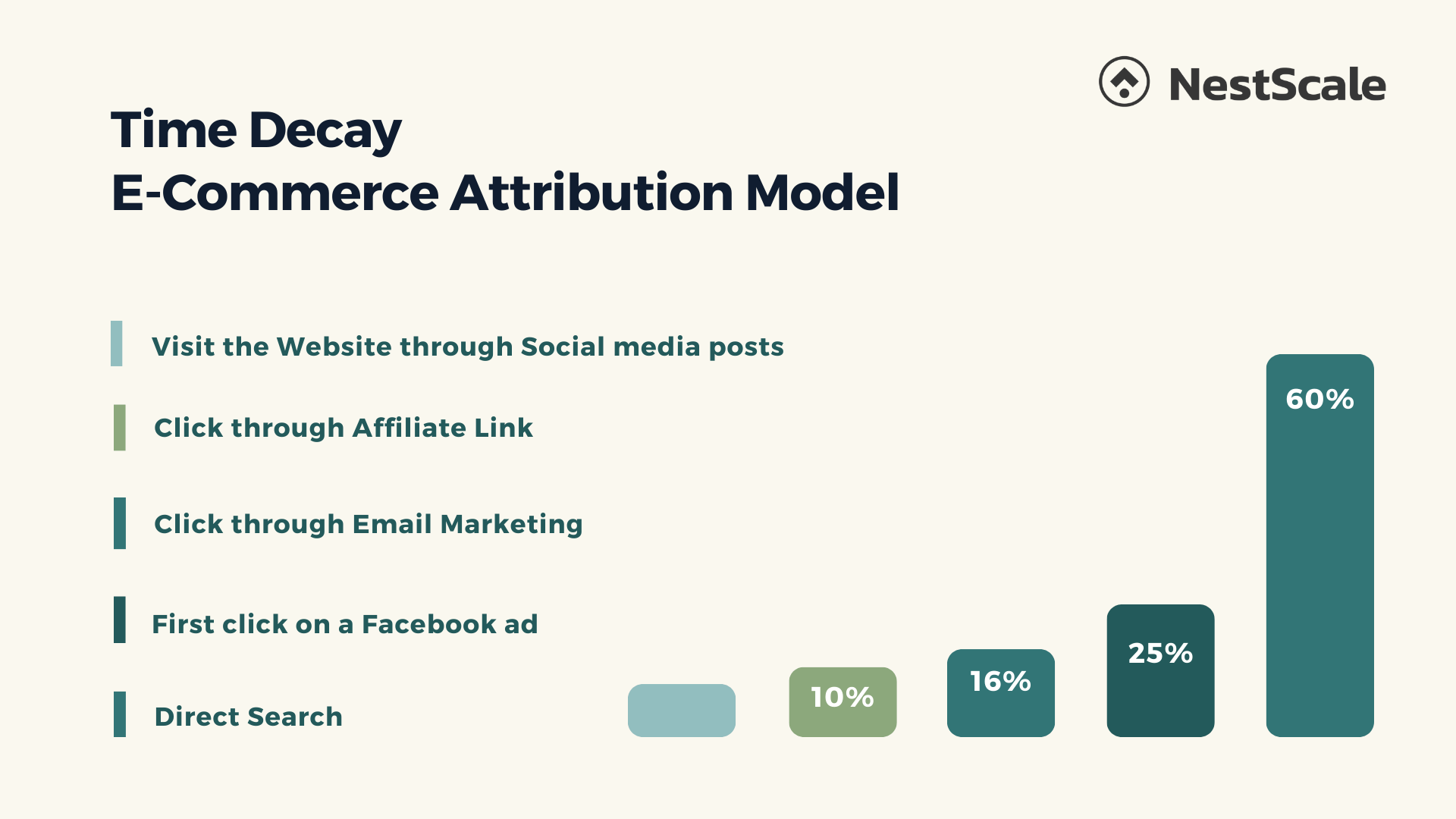
Time decay attribution recognizes that not all touchpoints have the same influence over time. It assigns more credit to interactions that occur closer to the conversion event, acknowledging the diminishing impact of earlier touchpoints.
This model is especially valuable when you’re running time-sensitive campaigns or promotions. It ensures that recent interactions receive the recognition they deserve in driving conversions.
Data-driven Attribution

The data-driven attribution model steps into the future of eCommerce analytics. Instead of relying on predefined rules, it uses advanced algorithms and machine learning to analyze vast datasets and determine the true impact of each touchpoint.
By harnessing the power of data, you can gain deep insights into your customers’ behavior. This model adapts to changing consumer trends and provides a holistic understanding of your eCommerce attribution.
How to choose the best attribution model for your business?
Shopify is a popular platform for E-Commerce businesses, that relies on Attribution models to measure the effectiveness of marketing efforts and track customer interactions. Let’s review some key points you need to notice when choosing the Shopify Attribution model that suits you best!
Know Your Customer’s Journey
Consider how complicated it is for your customers to make a purchase. If they interact with your brand in many ways before buying, go for Data-driven Attribution. If it’s a simple process, a Last-click model might do.
Product Type Matters
The type of stuff you sell also matters. If your products need lots of convincing, Data-driven Attribution helps. If they’re straightforward and quick to decide, Position-based Attribution could be enough.
Marketing Channels Count
Think about how many marketing channels you’re using. If you’re everywhere from emails to Google Ads to social media, a model like linear attribution helps you see which channels work. If you’re just starting and sticking to one or two channels, Last-click attribution can be handy.
Target Audience and Goals
Ask yourself who your audience is, what your goals are (like growing traffic or generating leads), and how many channels you’re using. This helps you decide on the right model. Google Analytics can help you compare models easily.
Remember, there’s no one-size-fits-all model. It depends on your unique circumstances and goals. Once you pick a model, focus on collecting and analyzing the data it gives you.
Then, tweak your marketing strategy to get the results you want!
Challenges of using the eCommerce attribution model
Complexity of Tracking the Customer Journey
Customers often switch devices and may delay purchases. For instance, users might interact with a Shopify ad on their smartphone but only buy it on their laptop later. Typically, the Last touchpoint gets all the credit, ignoring earlier influences. Cross-device journeys make it challenging to link sessions, resulting in an incomplete view.
Selecting the Right Marketing Attribution Model
Shopify users must choose between Single-touch and Multi-touch Attribution models, both relying heavily on cookies. Privacy regulations and tracking restrictions limit cookie use, potentially rendering models inaccurate. For instance, a Multi-touch model may assign credit to various touch points but struggle to accurately represent each impact.
The cookieless future
With Google and Apple restricting cookies, brands face uncertainty in planning and optimizing media effectively. Alternative solutions are imperative in this new cookieless landscape, as traditional Attribution models reliant on cookies become less viable. These challenges highlight the need for innovative approaches in the evolving world of E-Commerce Attribution.
How to solve these problems?
Dealing with these challenges isn’t straightforward; it can be quite a headache for marketers to address each one individually.
However, imagine a software solution that can resolve all three of these issues at once. It might sound too good to be true, but let me demonstrate how NestAds can smoothly navigate you through these hurdles.
Serve-side Tracking with 1st-Party Data
The conventional approach of third-party tracking, reliant on tags and pixels, has faltered due to the surge in ad blockers and restrictions on third-party cookies, resulting in inaccuracies in data. The NestAds Pixel offers a game-changing solution by gathering and processing 1st party data directly from web servers, enhancing data accuracy, and privacy, and reducing dependency on browser cookies.
Flexible Attribution Windows
Flexible attribution windows are vital in gauging the effectiveness of advertising, demanding alignment with unique business goals and customer behavior.
Conquering the iOS 17 Ad Tracking Blockage
The iOS 17 ad tracking blockade imposed by Apple has left E-Commerce advertisers in the dark. NestAds, powered by first-party data, remains unaffected, providing precise insights into ad performance without guesswork.
These challenges are the battlegrounds of digital advertising, and NestAds equips you with the tools to emerge victoriously in this ever-competitive landscape.
Ready to conquer the challenges of traditional E-Commerce Attribution models with confidence and precision? Join NestAds today and unlock the power to solve all your attribution woes effortlessly.
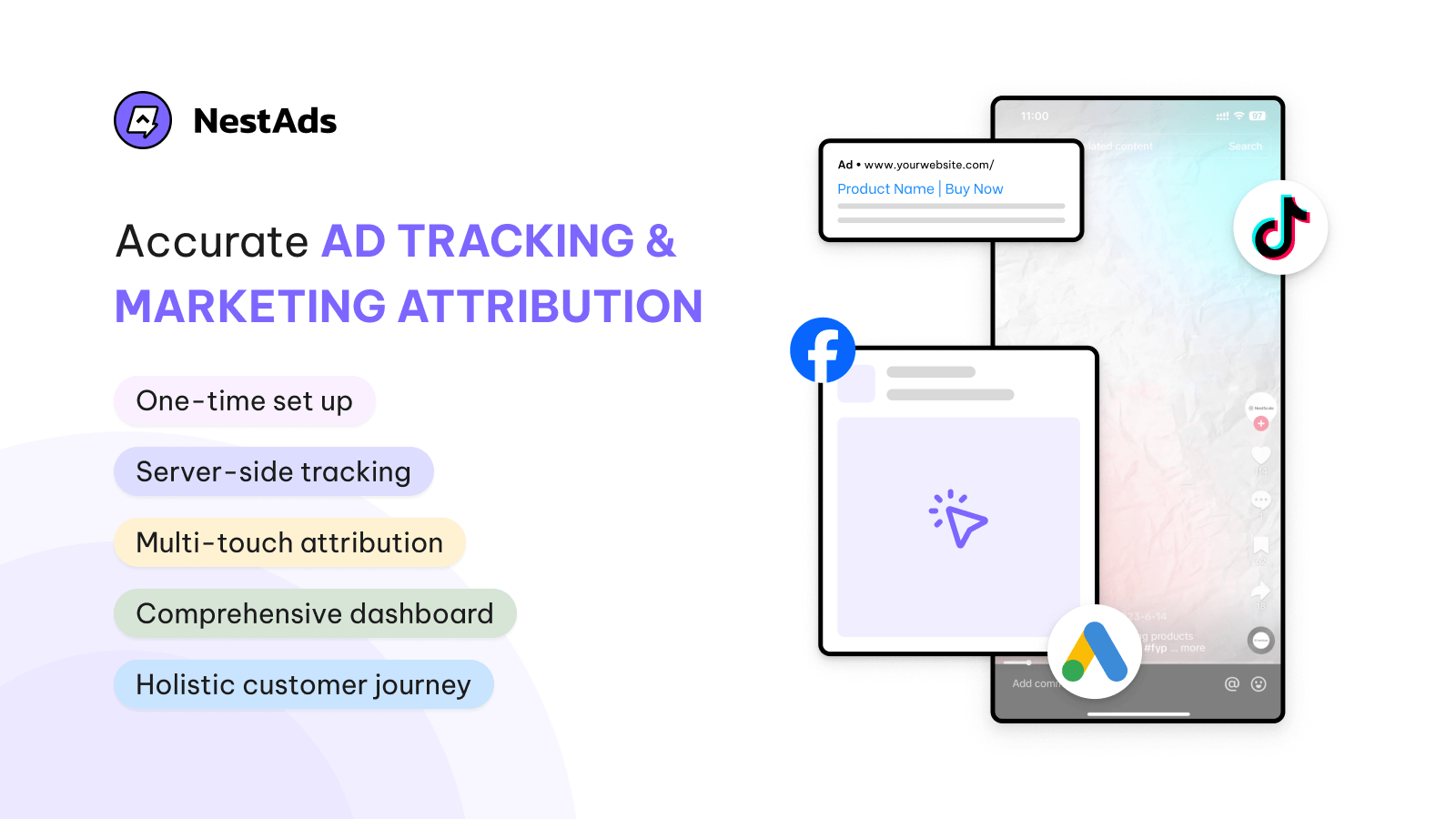
FAQs – What you may want to know more
What are the best eCommerce attribution models?
There isn’t a one-size-fits-all “best” e-commerce attribution model, and it depends on your business goals and customer journey.
For simplicity, position-based or linear models are also popular because they provide a balanced view across all interactions. The key is to choose a model that aligns with your strategy and regularly adjust it based on performance insights.
Is the setup of e-commerce attribution models the same across different social media platforms?
No, the setup of e-commerce attribution models is not the same across different social media platforms. Each platform has its own tracking systems, data collection methods, and analytics tools, which can affect how attribution is measured.
Additionally, user behavior can vary across platforms, leading to different interaction patterns that may require tailored attribution strategies. It’s important to customize your approach based on the specific features and data available from each platform!
What is the attribution model to increase sale?
It is up to your business to boost sales with e-commerce attribution models. Depending on your needs, consider using a data-driven model that assigns credit based on actual customer behavior across all touchpoints. This model helps you see which channels and campaigns truly drive conversions.
All attribution models can help you increase sales if you understand how they work and align them with your company’s needs. You might consider using a data-driven model that assigns credit based on actual customer behavior across all touchpoints.
You can also combine it with last-click or position-based models to get a clearer picture of what influences purchases. Regularly analyze and adjust based on what’s working best to optimize your marketing efforts and maximize sales.


















































